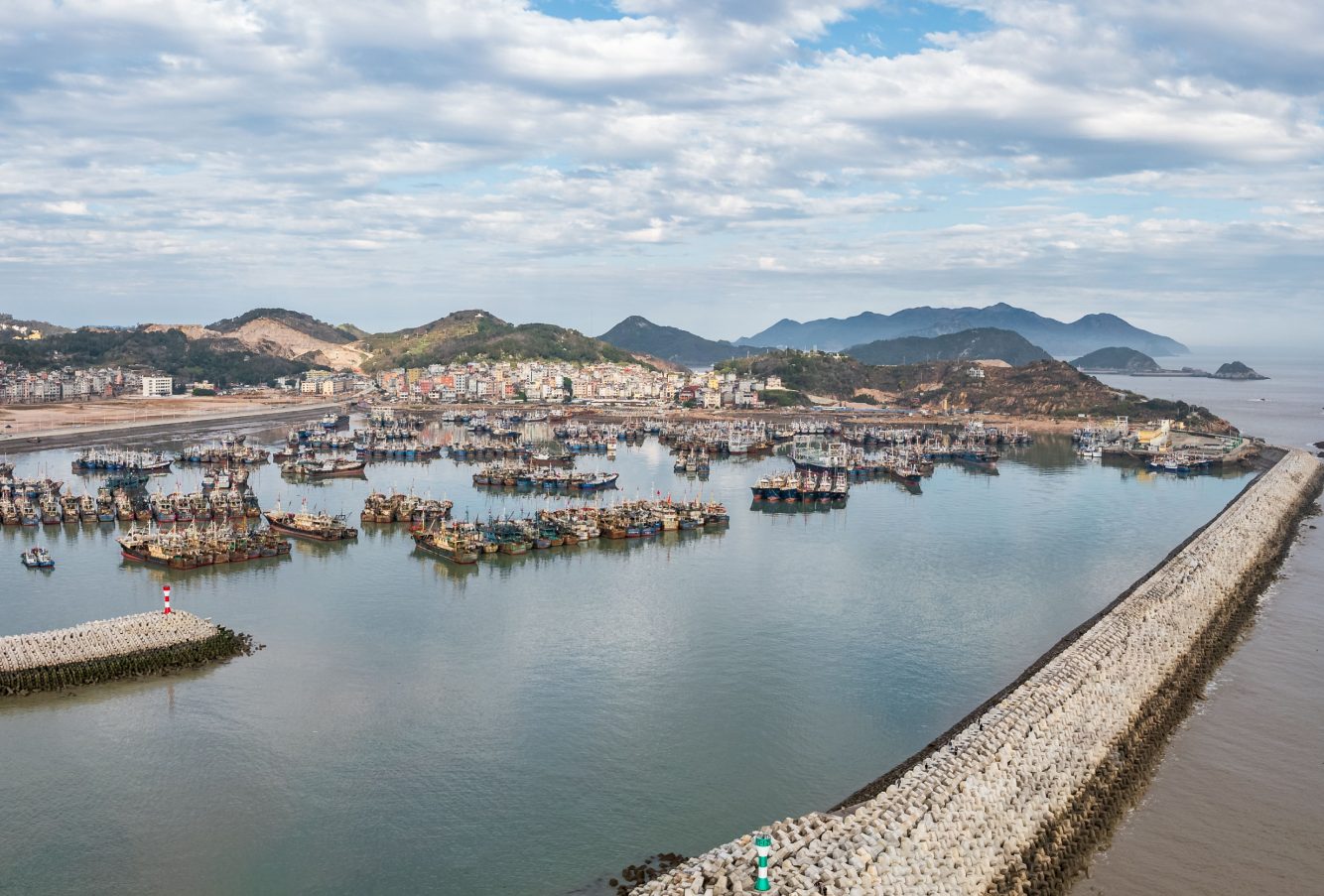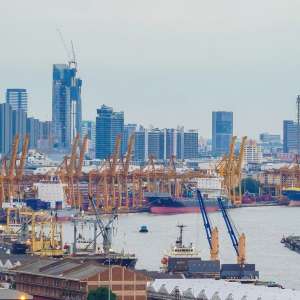A Comprehensive Guide to Shipping from Nansha Ocean Port to Vietnam
Latest update on 1 August, 2024 by Angelina Pang– Marketing Analyst at FreightAmigo
International transportation of goods involves a combination of logistics, legal requirements and practical operations. The route from Nansha Port in China to Vietnam is an important route in the maritime industry.
Nansha Port is in the Pearl River Delta in Guangdong Province, China and is an important maritime gateway. Its strategic location and advanced infrastructure make it an important player in international shipping. Vietnam has become an important trading partner of China with its growing economy and expanding ports. In this article, FreightAmigo aims to explore the complexities of shipping from Nansha Port to Vietnam, covering key aspects such as port facilities, shipping regulations, logistics considerations, and cost management.
Want to Instantly Compare International Express, Air, Sea, Rail Freight And Truck Logistics Management Solutions To Control Transportation Costs?
Overview of Nansha Ocean Port
Nansha Ocean Port is one of the fastest-growing ports in China, thanks to its state-of-the-art facilities and strategic initiatives aimed at boosting trade. The port is part of the Guangzhou Port Group and plays a crucial role in the Belt and Road Initiative (BRI), which aims to enhance global trade connectivity.
Port Facilities
Nansha Ocean Port boasts modern terminals that cater to various types of cargo, including containerized, bulk, and liquid goods. The port features deep-water berths that can accommodate the largest container ships, making it an attractive hub for international shipping lines. Additionally, the port is equipped with advanced cargo handling equipment, such as gantry cranes and automated systems, ensuring efficient loading and unloading processes.
Connectivity
The port’s connectivity is another significant advantage. It is well-linked to major highways and railways, facilitating seamless inland transportation. Furthermore, Nansha is part of a comprehensive network of feeder services that connect it to smaller ports along the Chinese coastline and beyond. This extensive network enhances its role as a transshipment hub, allowing for efficient cargo redistribution to various destinations, including Vietnam.
Shipping Regulations and Documentation
Shipping goods internationally requires compliance with a range of regulations and meticulous documentation. The shipping route from Nansha Ocean Port to Vietnam is no exception, necessitating adherence to both Chinese and Vietnamese regulations.
Chinese Regulations
China has stringent export regulations to ensure the quality and safety of goods leaving its shores. Exporters must obtain the necessary licenses and permits, depending on the nature of the goods. Key documents include the Commercial Invoice, Packing List, Bill of Lading, and Export License. Additionally, certain goods may require inspection and quarantine certificates to comply with Chinese export standards.
Vietnamese Regulations
Upon arrival in Vietnam, goods must clear customs, which involves presenting a set of documents like those required in China. These include the Commercial Invoice, Packing List, and Bill of Lading, along with the Certificate of Origin to benefit from preferential tariffs under trade agreements. Vietnamese authorities may also require additional permits for specific goods, particularly those related to health, safety, and environmental standards.
Harmonized System (HS) Codes
Both China and Vietnam adhere to the Harmonized System (HS) for classifying traded products. Accurate HS codes are essential for determining the correct tariffs and ensuring compliance with import and export regulations. Misclassification can lead to delays, fines, or even confiscation of goods.
Logistical Considerations
Effective logistics management is crucial for ensuring timely and cost-effective shipping. Several factors must be considered when planning shipments from Nansha Ocean Port to Vietnam.
Shipping Routes and Transit Time
The shipping route from Nansha to Vietnam typically involves maritime transport through the South China Sea. The transit time can vary depending on the specific ports of call in Vietnam, such as Ho Chi Minh City, Hai Phong, or Da Nang. On average, the sea voyage takes approximately 3 to 7 days, depending on the shipping line and the schedule.
Choosing the Right Shipping Line
Selecting a reliable shipping line is paramount. Factors to consider include the carrier’s reputation, frequency of sailings, transit time, and cost. Major shipping lines operating on this route include Maersk, COSCO, and CMA CGM, among others. It’s advisable to compare quotes and services to find the best fit for your shipping needs.
Containerization
Containerization is the preferred method for transporting goods due to its efficiency and security. Standard container sizes are 20-foot and 40-foot, with variations like high cube and refrigerated containers available for specific cargo requirements. Ensuring proper packaging and container sealing is essential to prevent damage and loss during transit.
Intermodal Transport
Intermodal transport, which combines multiple modes of transportation (e.g., sea, rail, and road), can enhance efficiency and reduce costs. For instance, goods can be shipped by sea to a Vietnamese port and then transported inland by rail or truck. Coordinating intermodal transport requires meticulous planning and reliable logistics partners.
Cost Management
Managing shipping costs is a critical aspect of international trade. Understanding the various cost components and exploring strategies to optimize expenses can significantly impact the profitability of shipping operations.
Freight Rates
Freight rates are influenced by several factors, including the type of cargo, container size, shipping route, and market demand. It’s essential to obtain and compare quotes from multiple shipping lines to secure competitive rates. Additionally, negotiating long-term contracts with carriers can provide cost stability.
Surcharges and Fees
In addition to freight rates, various surcharges and fees can impact the overall shipping cost. Common surcharges include fuel surcharges, terminal handling charges, and peak season surcharges. It’s important to understand these additional costs and factor them into your budget.
Customs Duties and Taxes
Customs duties and taxes in Vietnam can significantly affect the total cost of shipping. These charges are based on the declared value of the goods and their HS codes. Utilizing trade agreements, such as the ASEAN-China Free Trade Agreement, can help reduce or eliminate certain tariffs, provided the goods meet the rules of origin criteria.
Insurance
Insurance is a crucial aspect of shipping, providing protection against potential losses or damages during transit. Marine cargo insurance covers various risks, including theft, damage, and natural disasters. While insurance adds to the overall cost, it offers peace of mind and financial protection.
Conclusion
With FreightAmigo’s comprehensive guide, you can gain a comprehensive understanding of the port facilities, regulatory requirements, logistics considerations and cost management involved in shipping from Nansha Port to Vietnam. By effectively navigating these aspects, businesses can ensure a smooth and efficient shipping process and enhance their competitiveness in the international market. As global trade continues to evolve, staying informed and adaptable is key to successful transportation operations.
If you are looking for logistics experts, please visit FreightAmigo Page
If you have any inquiries on logistics / supply chain, feel free to contact FreightAmigo now:
Chat with us online | Hotline: +852 28121686 | WhatsApp: +852 27467829










































